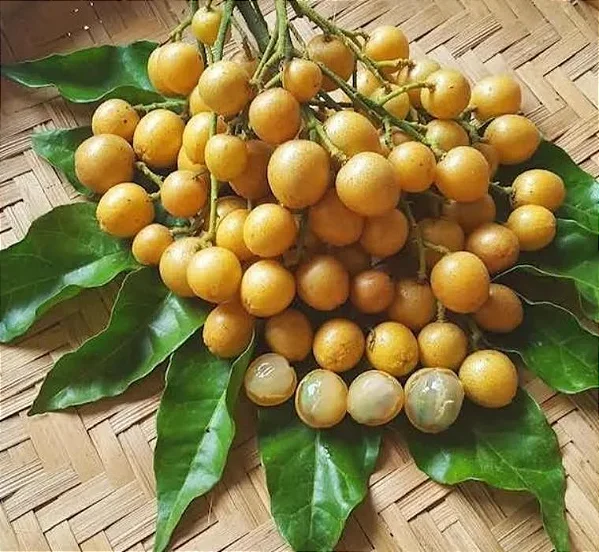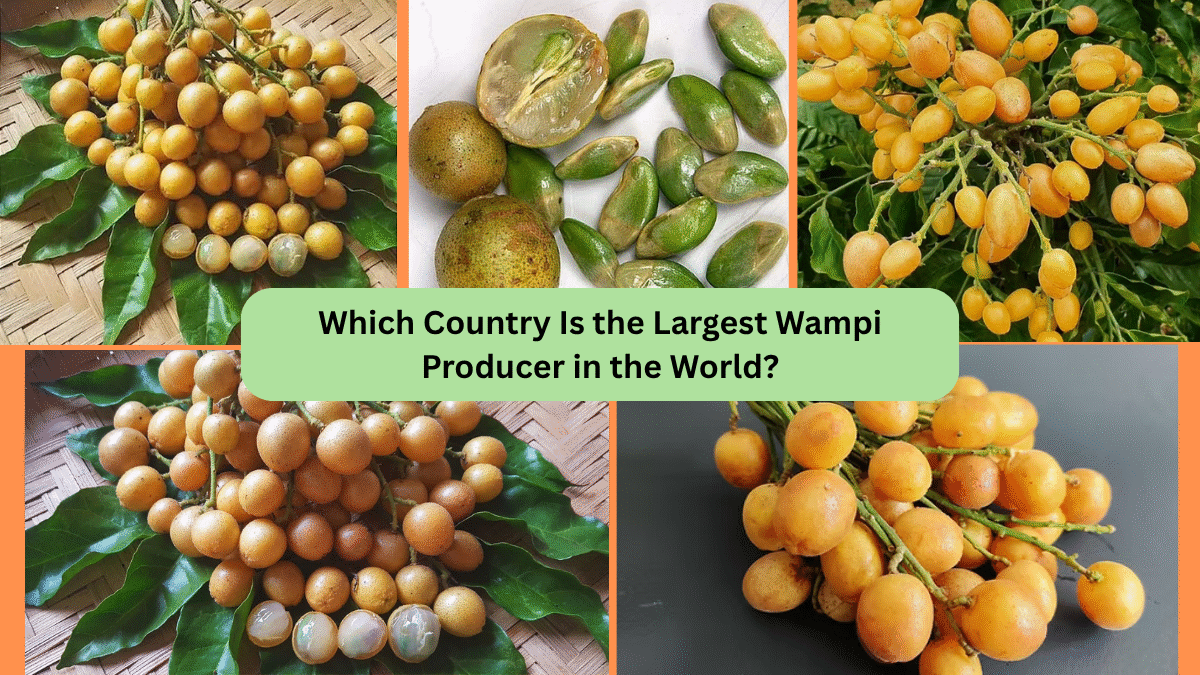In the diverse world of tropical and subtropical fruits, a lesser-known but culturally cherished fruit stands out — the Wampi (Clausena lansium). Known for its refreshing, tangy-sweet taste and medicinal benefits, Wampi is widely grown in several parts of Asia. But when it comes to large-scale commercial production and cultural significance, one country proudly takes the lead. China is officially recognized as the largest Wampi producer in the world.
In this article, we’ll explore the origins of Wampi, its nutritional values, uses, and the reasons why China dominates its production on the global stage.
What is Wampi?

The Wampi, also spelled Wampee, is a small, evergreen fruit-bearing tree belonging to the Rutaceae family — the same family as citrus fruits. Native to southern China and Southeast Asia, Wampi trees produce clusters of small, round to oval fruits that range in color from pale yellow to light brown when ripe.
The fruits have a thin, edible skin, and the pulp is juicy with a distinctive sweet-tart flavor, somewhat reminiscent of a combination of grape, lychee, and citrus. It’s consumed fresh, pickled, preserved, or made into desserts and drinks in various Asian cultures.
Origin and Historical Significance
Wampi’s history traces back centuries to southern China, particularly the provinces of Guangdong, Guangxi, Yunnan, and Hainan. From there, it spread to neighboring countries like Vietnam, Thailand, Malaysia, and the Philippines through trade and cultural exchange.
Ancient Chinese texts document Wampi’s use in traditional medicine for treating digestion problems, fevers, and skin conditions. Over time, it became an integral part of local diets and folk remedies in these regions.
Major Wampi Producing Countries
While Wampi is cultivated in several parts of Asia, its production remains limited in most countries to home gardens and small orchards. The major producers include:
- China (World’s Largest Producer)
- Vietnam
- Malaysia
- Indonesia
- Thailand
- Philippines
- India (in select regions)
- Australia (limited cultivation)
- Some parts of Hawaii and Florida, USA
Among these, China dominates Wampi production by a wide margin, both in terms of cultivated land area and annual harvest volumes.
Why China Leads in Wampi Production
Ideal Growing Conditions
China’s subtropical climate in provinces like Guangdong, Guangxi, and Yunnan offers the perfect environment for Wampi trees to thrive. Warm temperatures, high humidity, and fertile soil support high-yield harvests.
Extensive Cultivation
China has established both traditional orchards and modern plantations for Wampi cultivation. Areas like Maoming city in Guangdong are renowned for large-scale Wampi production. In fact, Maoming alone contributes a significant portion of China’s national Wampi output.
Rich Genetic Diversity
China boasts over 180 native cultivars of Wampi, varying in fruit size, flavor, sweetness, and ripening season. This genetic variety allows growers to extend the harvest season and cater to diverse consumer preferences.
Strong Domestic Demand
Wampi holds cultural importance in southern China and is featured in traditional dishes, herbal medicines, and festivals. Its popularity ensures consistent domestic demand, making it a profitable crop for farmers.
Emerging Export Market
China has recently expanded Wampi exports, especially to countries with large Asian diaspora communities such as Canada, Australia, and the USA. Improved cold-chain logistics and international quarantine standards have helped promote the fruit in global niche markets.
Production Statistics

While comprehensive global data for Wampi production is scarce due to its limited worldwide cultivation, agricultural reports from Guangdong Province estimate:
- Total cultivated area in China: Over 4,500 hectares
- Annual Wampi production in China: Approximately 35,000 metric tons
- Leading production region: Maoming City, Guangdong
Other countries produce Wampi only in small quantities, often limited to domestic markets or personal consumption.
Culinary and Medicinal Uses of Wampi
Culinary Uses
Wampi is versatile and can be consumed in various ways:
- Fresh: Eaten raw as a refreshing snack
- Pickled: Traditional sweet-sour pickles
- Preserves: Made into jams, jellies, and marmalades
- Juices and Syrups: Popular in summer beverages
- Desserts: Used in fruit salads and sweet soups
Its tangy-sweet flavor pairs well with spicy and salty dishes in Asian cuisine.
Medicinal Benefits
In traditional Chinese medicine (TCM) and other folk remedies, Wampi is valued for its medicinal properties:
- Aids digestion
- Reduces fevers
- Soothes sore throats
- Treats indigestion and constipation
- Used as an anti-inflammatory and antiseptic
The fruit is rich in vitamin C, antioxidants, and dietary fiber, making it a healthy addition to the diet.
Wampi Production in Other Countries

While no other country matches China’s production scale, Wampi remains popular in neighboring Asian nations:
- Vietnam: Grown widely in home gardens; consumed fresh and pickled.
- Malaysia and Indonesia: Valued for its medicinal uses; found in traditional village markets.
- Thailand and Philippines: Cultivated in small farms; appreciated as a backyard fruit.
- India (Western Ghats): Limited cultivation, mostly for local markets.
- Australia (Queensland): Minor production for niche markets.
- USA (Florida and Hawaii): Cultivated by tropical fruit enthusiasts and botanical gardens.
These countries produce Wampi largely for domestic use, with no significant exports.
Future Prospects for Wampi

As global consumers increasingly explore exotic fruits for their unique flavors and health benefits, Wampi has the potential to expand beyond traditional markets. With China’s established infrastructure, genetic resources, and export experience, it is well-positioned to lead Wampi’s introduction into international specialty fruit markets.
Potential growth areas include:
- Dried and preserved Wampi products
- Herbal teas and beverages
- Wampi-based natural remedies
- Functional health food products
With proper marketing and export strategies, Wampi could follow in the footsteps of other Asian fruits like lychee, longan, and rambutan.
Conclusion

In summary, China is the largest Wampi producer in the world, both historically and presently. With its ideal climate, rich genetic diversity, strong domestic demand, and emerging international markets, China continues to dominate Wampi cultivation and production.
While several other Asian countries grow Wampi in small quantities, none come close to matching China’s output or influence in shaping the global market for this unique fruit.
As awareness grows about the nutritional and medicinal benefits of Wampi, the fruit’s future on the global stage looks increasingly promising — and China will undoubtedly lead the way.





Leave A Comment